Senate celebrates Asian Heritage Month 2016 - Part 2
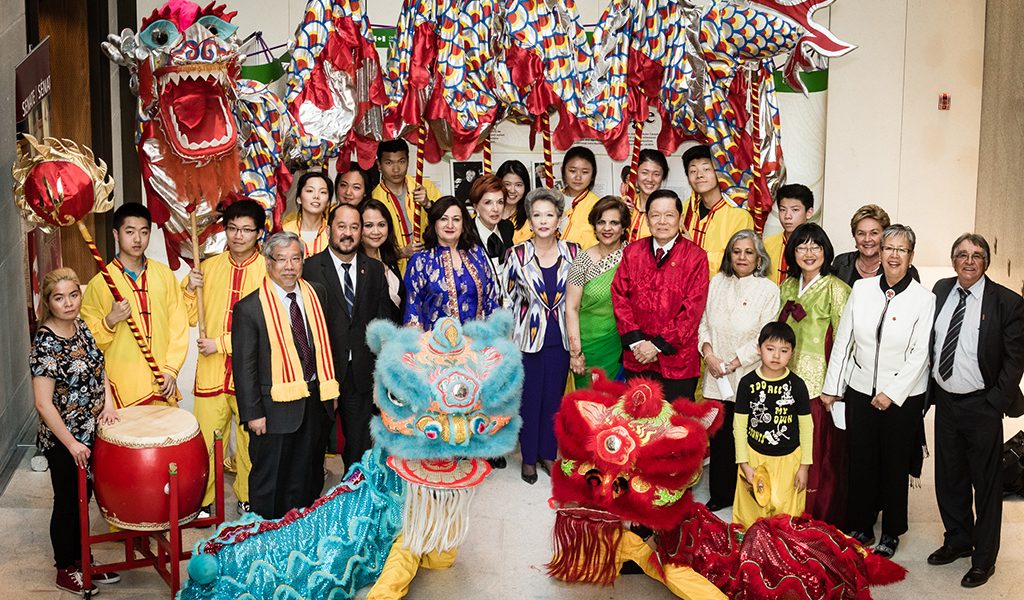
To conclude Asian Heritage Month 2016, Senators talk more about traditions and activities from their regions. On May 3, these Senators hosted an Asian Heritage Month reception featuring some of these activities.
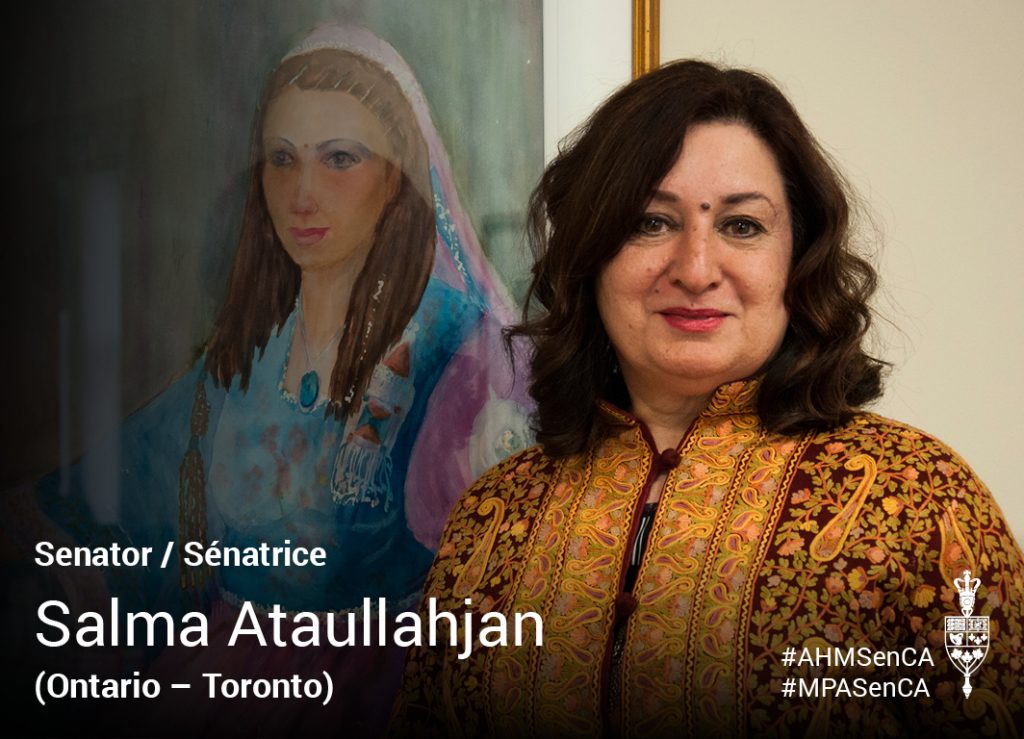
What does Asian Heritage Month mean to you, and why is it important to celebrate?
Canada is home to a vast Asian community from coast to coast. Asian Canadians of all backgrounds have made tremendous contributions to what makes Canada the best country in the world. The designation of May as Asian Heritage Month is a confirmation that these contributions indeed should be celebrated.
What is your favourite food item that makes you think of your childhood and why?
Chapli kabob, which is meat, onions, tomatoes, spices, egg and pomegranate seeds. They served it in the cafés in the town I grew up. The sight, the fragrance and the taste always remind me of my childhood growing up in Peshawar. It is a specialty in my province of Khyber Pakhtunkhwa.
Why is the cultural activity you sponsored at the Senate’s Asian Heritage Month reception significant?
Mehndi, or henna, is a ceremonial art form that traces its origins to the Indian Subcontinent, which Pakistan emerged from in the 1940s. The paste is applied to the skin in intricate designs (typically on women).
Mehndi is performed in Pakistan at major celebrations, such as weddings and during holy festivals for Muslims such as Eid-ul-Fitr and Eid-ul-Adha. Weddings can sometimes be several-week-long affairs, with various ceremonies and parties. The mehndi ceremony is the day before the wedding, and it is when the art is applied to the bride and other women.
Personally, I still remember my own mehndi ceremony before my wedding to my husband Saleem — it was an important day before we became married. In Pakistan, it is an extremely fun event with singing and dancing while the mehndi is being applied. Countries such as India, Bangladesh, the Maldives and Nepal also have their own henna traditions with varying designs and cultural significance.
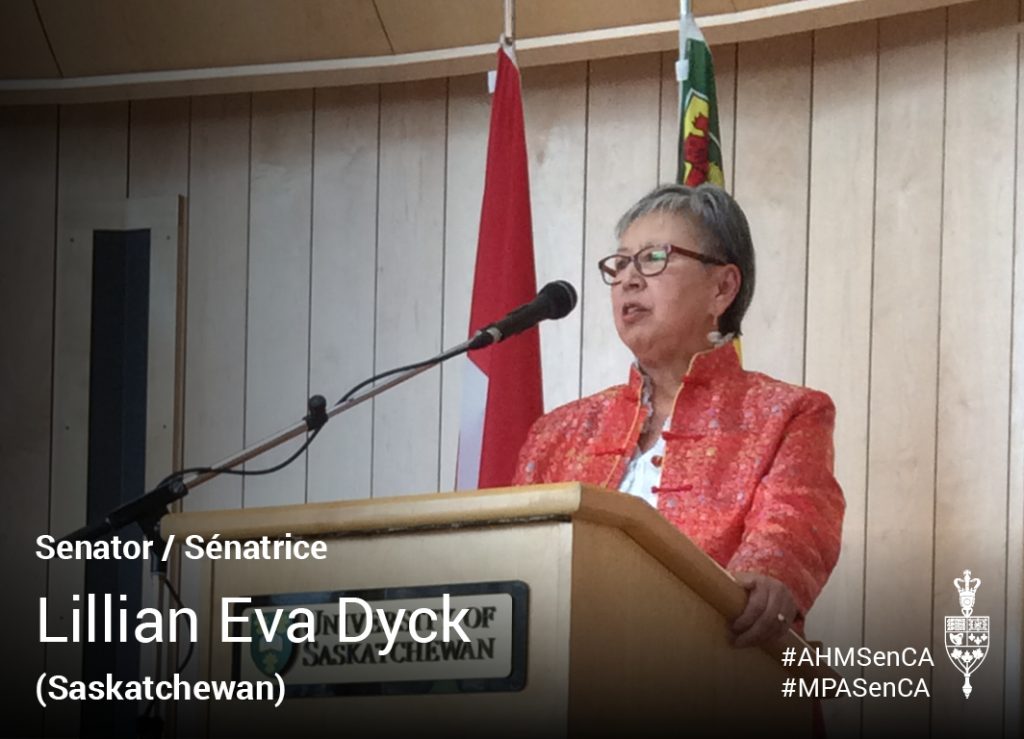
What does Asian Heritage Month mean to you, and why is it important to celebrate it?
It's important to remember what our ancestors contributed to the evolution of Canada as a country.
What is your favourite food item that makes you think of your childhood and why?
Chai sue (phonetic spelling). Pork tenderloin roasted with soya sauce and spices. We only got this on special occasions like Chinese New Year, and it was delicious. My dad was a great cook.
Why is the cultural activity you sponsored at the Senate’s Asian Heritage Month reception significant?
It’s important to remind people that Canada is made up of diverse peoples, and this event reminds us to celebrate that and to honor them.

What does Asian Heritage Month mean to you and why is it important to celebrate?
To me, Asian Heritage Month is about the continued respect and acceptance, friendship and harmony among the diverse peoples and cultures that make up the strong fabric of Canadian society.
This month allows Canadians of Asian heritage, including myself, to celebrate not only our cultures and traditions, but also our contributions to Canada. It allows us to share our story with our fellow Canadians, so that all of us can better appreciate the rich multiculturalism that makes our country stand out from the rest of the world.
What is your favourite food item that makes you think of your childhood and why?
One of my favourite food items is the sinantol, which is a delicacy in my native province, Quezon. I grew up in Lucena, where we always enjoyed a lot of seafood. Sinantol is basically a blend of seafood and santol, or cottonfruit, a tropical fruit that has been naturalized in the Philippines. It’s very hard to find stores in Canada that sell santol, so I need to visit the Philippines every now and again to get that authentic taste that reminds me of home.
Other food items that I particularly like are the Philippine adobo and halo-halo. Adobo is a cuisine made of meat marinated and simmered in vinegar, soy sauce and garlic, while halo-halo is a dessert made by mixing many sweet ingredients, including fruits and sweetened beans, with shaved ice, sugar and evaporated milk, topped with either leche flan (the Philippine version of crème caramel), purple yam or ice cream, or any combination of the three.
Why is the cultural activity you sponsored at the Senate’s Asian Heritage Month reception significant?
This cultural activity, sponsored with the assistance of the Embassy of the Philippines, is very significant because it will feature some unique cultural exhibits and displays that will surely tickle the imagination of everyone. Participation and experience is the key when our guests go to the photo booth that allows them to try on the Philippines’ national attires. This is a great way of showcasing the fine needlework and craftsmanship of Filipinos, and the attires are testaments to our colonial past and our heritage’s rich multicultural influences.
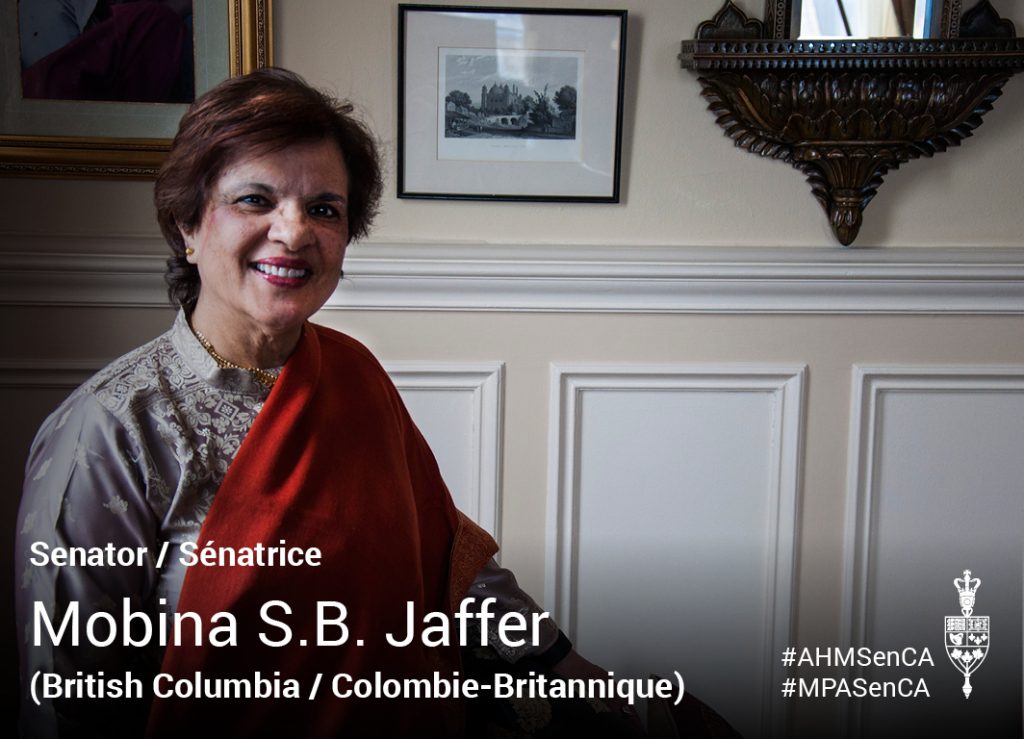
What does Asian Heritage Month mean to you and why is it important to celebrate?
Asian Heritage Month is important because it celebrates diversity and promotes intercultural understanding.
What is your favorite food item that makes you think of your childhood and why?
My favourite food is samosas. In fact, I like them so much that at least twice a year I bring a huge batch into work and share them with Senate administration and security.
Why is the cultural activity you sponsored at the Senate’s Asian Heritage Month significant?
The dances that I sponsored are some of the most popular classical dances in India, and are almost 2000 years old.
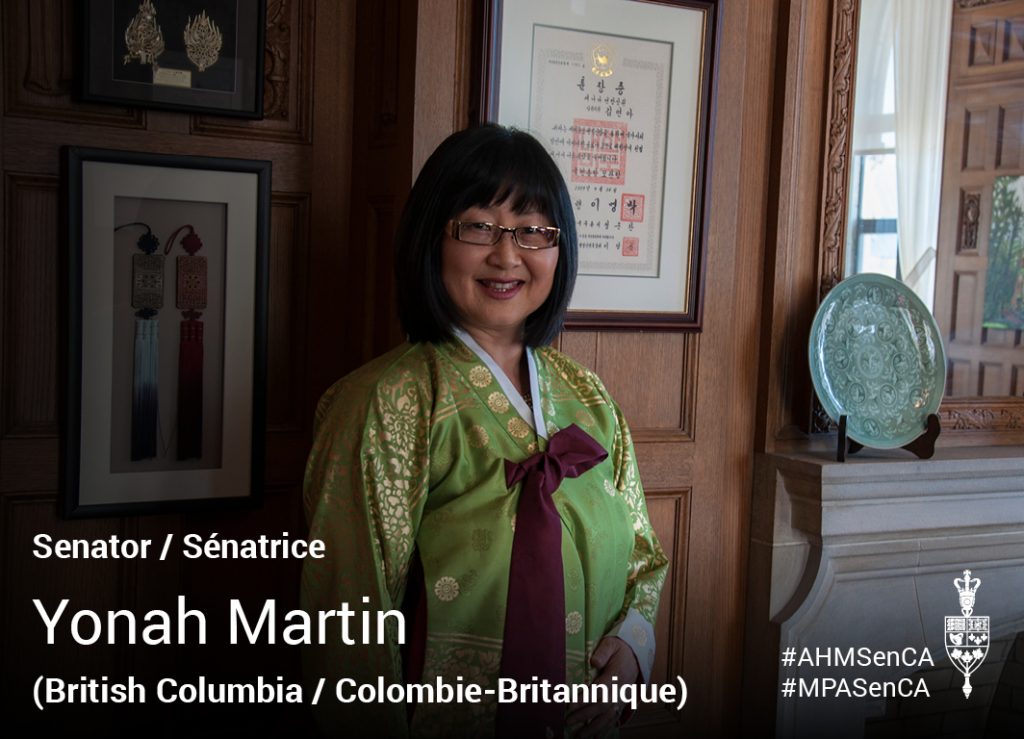
What does Asian Heritage Month mean to you and why is it important to celebrate it?
Asian Canadians have played key roles in the building of Canada for more than 100 years.
I was first inspired to enter politics after seeing "I am the Canadian delegate" (a documentary about Douglas Jung, the first Asian-Canadian Member of Parliament, Conservative MP for Vancouver Centre), who fought in WWII as a stateless person even though he was Canadian-born. Then he later fought for the right to Canadian citizenship and the right to vote.
And these rights, hard-fought and -earned, paved a path for our former colleague Senator Vivienne Poy, the "godmother of Asian Heritage Month," to move the motion which recognizes May and the importance of Asian Canadians, past and present, who are integral to the fabric of our nation. Creating awareness fosters greater understanding and appreciation, which then strengthens the very fabric of Canadian society.
What is your favourite food item that makes you think of your childhood and why?
During the Lunar New Year (and the western calendar New Year), one of the traditions (among many) for every Korean family is to eat a special rice-cake soup (called dduk-gook) for good luck and blessings throughout the year ahead. Every woman has her own recipe, which she will most likely boast as the "best." I have fortunately inherited my mother's special recipe, which I happen to think is truly the best and tastiest!
Why is the cultural activity you sponsored at the Senate’s Asian Heritage Month event significant?
The cultural experience that participants had was to try on traditional Korean costumes and learn how to write their names in Korean (called hangeul).
Like food and other cultural elements, the traditional clothing is reflective of the history, culture and symbols of the country. Korean costumes are made of silk and exquisite embroidery that reflect the refined tastes and artistry of Korea.
The Korean alphabet, created by King Sejong, was meant to be accessible to all people of his kingdom, nobles and peasants alike, in order to unite and educate the people through ease of communication. They call hangeul the "morning language," as anyone can learn to learn the Korean alphabet (consonants and vowels) and read and write in one morning.
Lastly, the traditional games that people tried are perfect examples of the power of traditional games to unite a group that may be multi-generational, mixed-gender and diverse in other ways. These clever games and toys are timeless and are enjoyed by children and adults to this day.
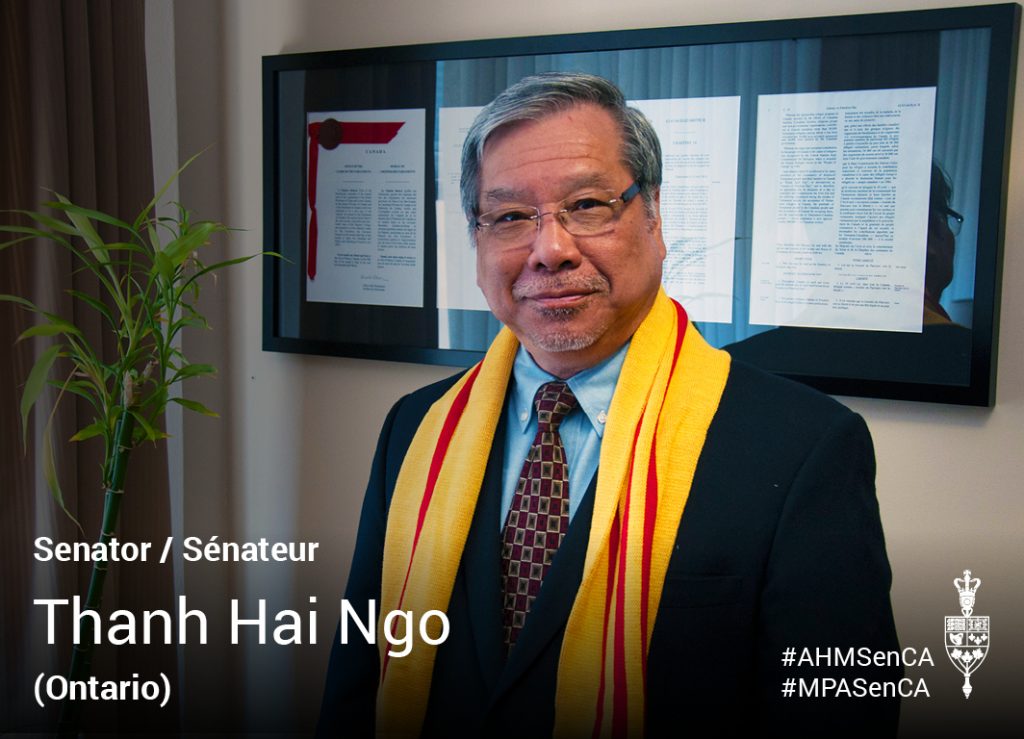
What does Asian Heritage Month mean to you and why is it important to celebrate?
Asian Heritage Month is important because it allows us to keep our traditions, cultures and customs – which enrich Canadian society – while blending into Canadian values.
What is your favourite food item that makes you think of your childhood and why?
I cannot pick just one favourite item as there are so many, but I am sure pho is the most popular dish of Vietnamese cuisine.
Why is the cultural activity you sponsored at the Senate’s Asian Heritage Month event significant?
The fan dance is a traditional performance that is graceful and elegant, usually performed at festivals and historically at royal events. The dancers usually also don traditional clothing from different parts of Vietnam for the performance.
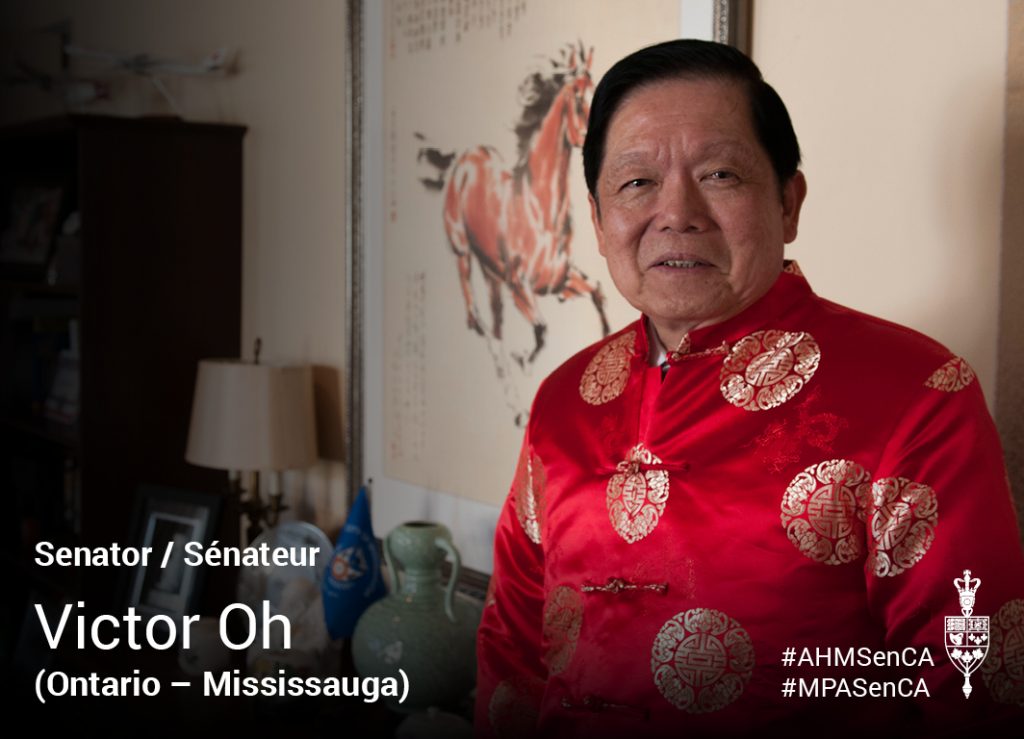
What does Asian Heritage Month mean to you and why is it important to celebrate it?
Asian Heritage Month commemorates the achievements and contributions of Canadians of Asian heritage, while also giving an opportunity to fellow Canadians to celebrate the rich history and traditions of this community.
As a Canadian, I am thankful to live in a country that recognizes the value of cultural diversity and mutual respect. Whether it is in May or another time of the year, everyone should take part in events to better understand the experiences and voices of Asian Canadians. I personally enjoy going to activities in my community that foster economic, cultural and people-to-people exchanges.
What is your favourite food item that makes you think of your childhood and why?
When I was growing up, I really enjoyed eating durian – a local favourite known as the “king of fruits.” Since the fruit is heavy and has a thorn-covered husk, I remember hurting myself on multiple occasions. I still can’t get over the strong smell.
Why is the cultural activity you sponsored at the Senate’s Asian Heritage Month event significant?
A tea-tasting and a dragon dance – these experiences provide guests with an opportunity to learn more about the history and culture of the Chinese-Canadian community.
Related articles
Tags
Committee news
Senate celebrates Asian Heritage Month 2016 - Part 2

To conclude Asian Heritage Month 2016, Senators talk more about traditions and activities from their regions. On May 3, these Senators hosted an Asian Heritage Month reception featuring some of these activities.

What does Asian Heritage Month mean to you, and why is it important to celebrate?
Canada is home to a vast Asian community from coast to coast. Asian Canadians of all backgrounds have made tremendous contributions to what makes Canada the best country in the world. The designation of May as Asian Heritage Month is a confirmation that these contributions indeed should be celebrated.
What is your favourite food item that makes you think of your childhood and why?
Chapli kabob, which is meat, onions, tomatoes, spices, egg and pomegranate seeds. They served it in the cafés in the town I grew up. The sight, the fragrance and the taste always remind me of my childhood growing up in Peshawar. It is a specialty in my province of Khyber Pakhtunkhwa.
Why is the cultural activity you sponsored at the Senate’s Asian Heritage Month reception significant?
Mehndi, or henna, is a ceremonial art form that traces its origins to the Indian Subcontinent, which Pakistan emerged from in the 1940s. The paste is applied to the skin in intricate designs (typically on women).
Mehndi is performed in Pakistan at major celebrations, such as weddings and during holy festivals for Muslims such as Eid-ul-Fitr and Eid-ul-Adha. Weddings can sometimes be several-week-long affairs, with various ceremonies and parties. The mehndi ceremony is the day before the wedding, and it is when the art is applied to the bride and other women.
Personally, I still remember my own mehndi ceremony before my wedding to my husband Saleem — it was an important day before we became married. In Pakistan, it is an extremely fun event with singing and dancing while the mehndi is being applied. Countries such as India, Bangladesh, the Maldives and Nepal also have their own henna traditions with varying designs and cultural significance.

What does Asian Heritage Month mean to you, and why is it important to celebrate it?
It's important to remember what our ancestors contributed to the evolution of Canada as a country.
What is your favourite food item that makes you think of your childhood and why?
Chai sue (phonetic spelling). Pork tenderloin roasted with soya sauce and spices. We only got this on special occasions like Chinese New Year, and it was delicious. My dad was a great cook.
Why is the cultural activity you sponsored at the Senate’s Asian Heritage Month reception significant?
It’s important to remind people that Canada is made up of diverse peoples, and this event reminds us to celebrate that and to honor them.

What does Asian Heritage Month mean to you and why is it important to celebrate?
To me, Asian Heritage Month is about the continued respect and acceptance, friendship and harmony among the diverse peoples and cultures that make up the strong fabric of Canadian society.
This month allows Canadians of Asian heritage, including myself, to celebrate not only our cultures and traditions, but also our contributions to Canada. It allows us to share our story with our fellow Canadians, so that all of us can better appreciate the rich multiculturalism that makes our country stand out from the rest of the world.
What is your favourite food item that makes you think of your childhood and why?
One of my favourite food items is the sinantol, which is a delicacy in my native province, Quezon. I grew up in Lucena, where we always enjoyed a lot of seafood. Sinantol is basically a blend of seafood and santol, or cottonfruit, a tropical fruit that has been naturalized in the Philippines. It’s very hard to find stores in Canada that sell santol, so I need to visit the Philippines every now and again to get that authentic taste that reminds me of home.
Other food items that I particularly like are the Philippine adobo and halo-halo. Adobo is a cuisine made of meat marinated and simmered in vinegar, soy sauce and garlic, while halo-halo is a dessert made by mixing many sweet ingredients, including fruits and sweetened beans, with shaved ice, sugar and evaporated milk, topped with either leche flan (the Philippine version of crème caramel), purple yam or ice cream, or any combination of the three.
Why is the cultural activity you sponsored at the Senate’s Asian Heritage Month reception significant?
This cultural activity, sponsored with the assistance of the Embassy of the Philippines, is very significant because it will feature some unique cultural exhibits and displays that will surely tickle the imagination of everyone. Participation and experience is the key when our guests go to the photo booth that allows them to try on the Philippines’ national attires. This is a great way of showcasing the fine needlework and craftsmanship of Filipinos, and the attires are testaments to our colonial past and our heritage’s rich multicultural influences.

What does Asian Heritage Month mean to you and why is it important to celebrate?
Asian Heritage Month is important because it celebrates diversity and promotes intercultural understanding.
What is your favorite food item that makes you think of your childhood and why?
My favourite food is samosas. In fact, I like them so much that at least twice a year I bring a huge batch into work and share them with Senate administration and security.
Why is the cultural activity you sponsored at the Senate’s Asian Heritage Month significant?
The dances that I sponsored are some of the most popular classical dances in India, and are almost 2000 years old.

What does Asian Heritage Month mean to you and why is it important to celebrate it?
Asian Canadians have played key roles in the building of Canada for more than 100 years.
I was first inspired to enter politics after seeing "I am the Canadian delegate" (a documentary about Douglas Jung, the first Asian-Canadian Member of Parliament, Conservative MP for Vancouver Centre), who fought in WWII as a stateless person even though he was Canadian-born. Then he later fought for the right to Canadian citizenship and the right to vote.
And these rights, hard-fought and -earned, paved a path for our former colleague Senator Vivienne Poy, the "godmother of Asian Heritage Month," to move the motion which recognizes May and the importance of Asian Canadians, past and present, who are integral to the fabric of our nation. Creating awareness fosters greater understanding and appreciation, which then strengthens the very fabric of Canadian society.
What is your favourite food item that makes you think of your childhood and why?
During the Lunar New Year (and the western calendar New Year), one of the traditions (among many) for every Korean family is to eat a special rice-cake soup (called dduk-gook) for good luck and blessings throughout the year ahead. Every woman has her own recipe, which she will most likely boast as the "best." I have fortunately inherited my mother's special recipe, which I happen to think is truly the best and tastiest!
Why is the cultural activity you sponsored at the Senate’s Asian Heritage Month event significant?
The cultural experience that participants had was to try on traditional Korean costumes and learn how to write their names in Korean (called hangeul).
Like food and other cultural elements, the traditional clothing is reflective of the history, culture and symbols of the country. Korean costumes are made of silk and exquisite embroidery that reflect the refined tastes and artistry of Korea.
The Korean alphabet, created by King Sejong, was meant to be accessible to all people of his kingdom, nobles and peasants alike, in order to unite and educate the people through ease of communication. They call hangeul the "morning language," as anyone can learn to learn the Korean alphabet (consonants and vowels) and read and write in one morning.
Lastly, the traditional games that people tried are perfect examples of the power of traditional games to unite a group that may be multi-generational, mixed-gender and diverse in other ways. These clever games and toys are timeless and are enjoyed by children and adults to this day.

What does Asian Heritage Month mean to you and why is it important to celebrate?
Asian Heritage Month is important because it allows us to keep our traditions, cultures and customs – which enrich Canadian society – while blending into Canadian values.
What is your favourite food item that makes you think of your childhood and why?
I cannot pick just one favourite item as there are so many, but I am sure pho is the most popular dish of Vietnamese cuisine.
Why is the cultural activity you sponsored at the Senate’s Asian Heritage Month event significant?
The fan dance is a traditional performance that is graceful and elegant, usually performed at festivals and historically at royal events. The dancers usually also don traditional clothing from different parts of Vietnam for the performance.

What does Asian Heritage Month mean to you and why is it important to celebrate it?
Asian Heritage Month commemorates the achievements and contributions of Canadians of Asian heritage, while also giving an opportunity to fellow Canadians to celebrate the rich history and traditions of this community.
As a Canadian, I am thankful to live in a country that recognizes the value of cultural diversity and mutual respect. Whether it is in May or another time of the year, everyone should take part in events to better understand the experiences and voices of Asian Canadians. I personally enjoy going to activities in my community that foster economic, cultural and people-to-people exchanges.
What is your favourite food item that makes you think of your childhood and why?
When I was growing up, I really enjoyed eating durian – a local favourite known as the “king of fruits.” Since the fruit is heavy and has a thorn-covered husk, I remember hurting myself on multiple occasions. I still can’t get over the strong smell.
Why is the cultural activity you sponsored at the Senate’s Asian Heritage Month event significant?
A tea-tasting and a dragon dance – these experiences provide guests with an opportunity to learn more about the history and culture of the Chinese-Canadian community.


